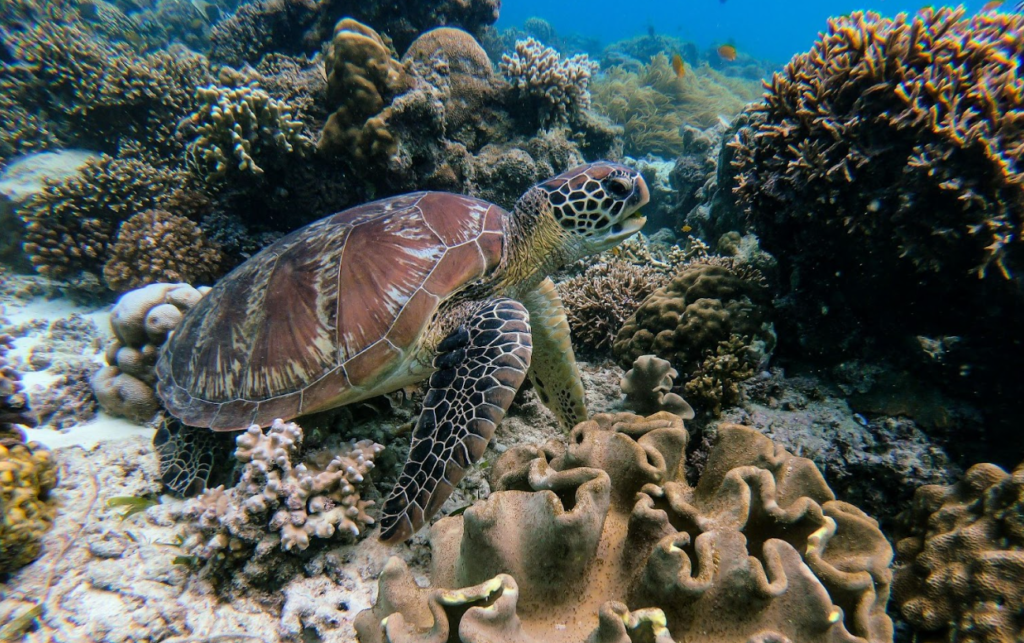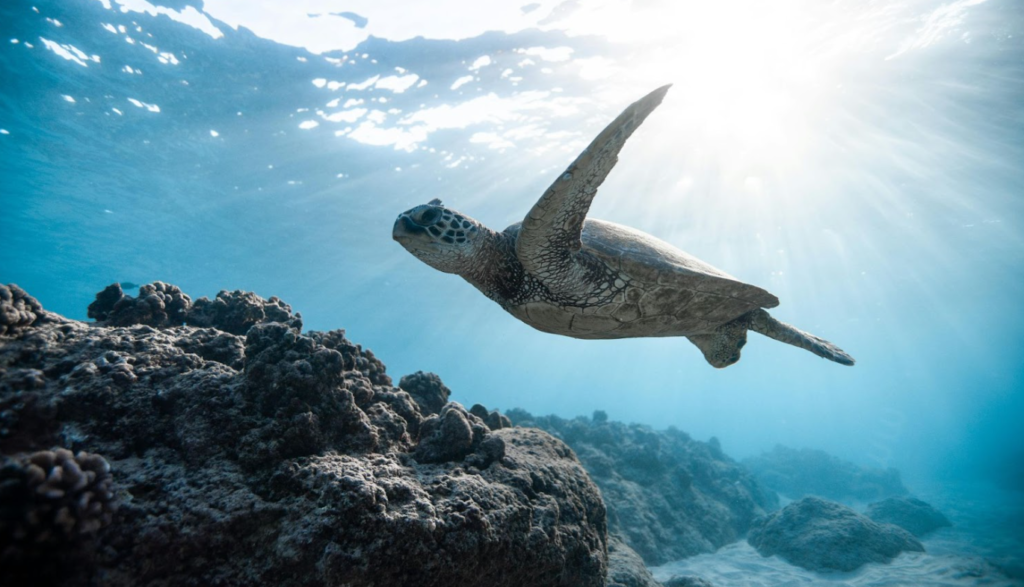
By: Assaf Levy, BioDB
World Sea Turtle Day, celebrated annually on June 16th, is a day dedicated to raising awareness about the plight of sea turtles and the urgent need for their conservation. This special day highlights the importance of protecting these ancient mariners, which play a crucial role in maintaining the health of marine ecosystems. Through education, community involvement, and conservation efforts, World Sea Turtle Day aims to inspire people around the globe to take action in preserving these magnificent creatures and their habitats, ensuring their survival for future generations.
Imagine creatures that have graced our oceans for over 100 million years – that’s the incredible story of sea turtles! These gentle giants have witnessed the rise and fall of dinosaurs, swam alongside prehistoric sharks, and continue to navigate the vast blue expanse today. But their future hangs in the balance, making conservation efforts crucial for their survival.
A Family of Seven:
The sea turtle family isn’t a small one! There are seven recognized species, each with unique characteristics and habitats:
Leatherback: The undisputed giant, the leatherback turtle is the largest living sea turtle and the fourth-largest reptile on Earth! Their streamlined, black bodies can reach a staggering 7 feet in length and weigh over 2,000 pounds. Unlike other sea turtles, they have a leathery, flexible shell instead of a hard, bony one.
Green Turtle: Easily recognized by their greenish-black carapace (upper shell) and grazing habits, green turtles are found in tropical and subtropical waters. They’re the only herbivores among sea turtles, feasting on seagrasses and algae.
Hawksbill Turtle: These critically endangered beauties are named for their pointed beak, perfect for prying prey like sponges and sea squirts from coral reefs. Their stunning shells are prized for tortoiseshell products, making them a target for illegal hunting.
Kemp’s Ridley Sea Turtle: The smallest of the bunch, Kemp’s ridleys are named after Richard Kemp, who discovered a major nesting site in Mexico. Sadly, they are also the most critically endangered sea turtle species.
Olive Ridley Sea Turtle: Olive ridleys are known for their mass nesting events, where thousands of females gather on beaches to lay their eggs. Their olive-green colored carapace and flippers make them easily identifiable.
Flatback Sea Turtle: Found primarily in the waters off Australia, flatback turtles have a streamlined, flattened shell that allows them to navigate shallow waters and reefs with ease. They are the least studied of all sea turtle species
A Life on the Move
Sea turtles are incredible travelers. They spend most of their lives roaming vast distances in the ocean, navigating using Earth’s magnetic field and the position of the sun and stars. Females return to the same beaches where they hatched decades earlier to lay their eggs, a remarkable feat of memory and instinct.
After a long journey, female sea turtles haul themselves onto beaches at night to lay their eggs. They dig a hole in the sand with their powerful flippers and lay anywhere from 50 to 200 eggs before burying them and returning to the sea. The eggs incubate for several weeks under the warm sun. Hatchlings, tiny and vulnerable, erupt from the sand driven by a primal instinct to reach the water. Sadly, many fall prey to predators like crabs and birds on this perilous journey.

Threats and Conservation Efforts:
Sea turtles face a multitude of threats. Here’s a breakdown of the major threats faced by sea turtles:
Habitat Loss: Coastal development for homes, hotels, and resorts destroys nesting beaches, which are crucial for female turtles to lay their eggs. This loss of suitable nesting grounds directly impacts their ability to reproduce.
Bycatch: Sea turtles often get accidentally caught in fishing gear, like nets and longlines, set for other species. This bycatch can drown or injure the turtles, impacting their survival rates.
Pollution: Our oceans are becoming increasingly polluted with plastic debris, chemical runoff, and oil spills. Sea turtles can ingest plastic, mistaking it for food, leading to blockages and starvation. Pollution can also harm their health and disrupt their delicate ecosystems.
Climate Change: Rising sea levels due to climate change threaten nesting beaches by eroding them. Additionally, warming ocean temperatures can disrupt sex ratios in hatchlings, leading to an imbalance in future populations.
Egg Poaching: In some areas, sea turtle eggs are considered a delicacy and are illegally harvested from nests. This directly reduces the number of hatchlings that reach adulthood.
Predation: While natural predators like crabs and birds take their toll on hatchlings, human activities can exacerbate this issue. Artificial lights on beaches disorient hatchlings, making them easier prey, and invasive species introduced by humans can also become predators.
However, there is hope! Conservation efforts are underway to protect these magnificent creatures. Here are some key initiatives:
Protecting Nesting Beaches: Organizations and volunteers work tirelessly to protect nesting beaches, limiting human disturbance and creating safe havens for nesting females and their eggs.
Reducing Bycatch: Turtle Excluder Devices (TEDs) are being used on fishing gear, allowing turtles to escape unharmed.
Raising Awareness: Educational programs and outreach efforts are helping people understand the plight of sea turtles and how they can help.
Rehabilitation and Release: Injured or sick sea turtles are being cared for in rehabilitation centers before being released back into the wild.
Sea turtles are remarkable creatures with a rich history and vital ecological roles. Despite facing numerous threats, ongoing conservation efforts offer hope for their future. By protecting sea turtles and their habitats, we not only safeguard these ancient mariners but also the health of our oceans. As individuals, we can contribute to their conservation by reducing plastic use, supporting sustainable fishing practices, and spreading awareness about the importance of sea turtles. Together, we can ensure that these magnificent animals continue to thrive for generations to come.
